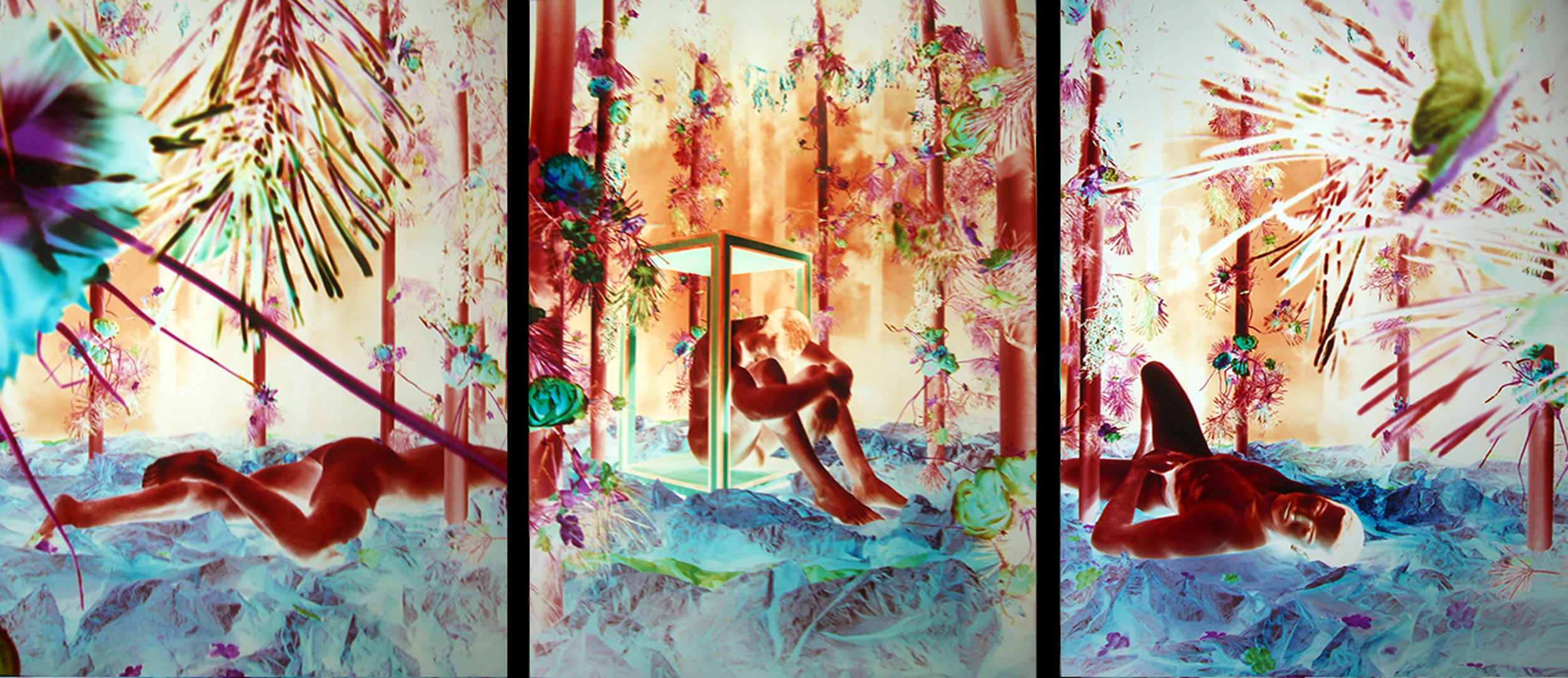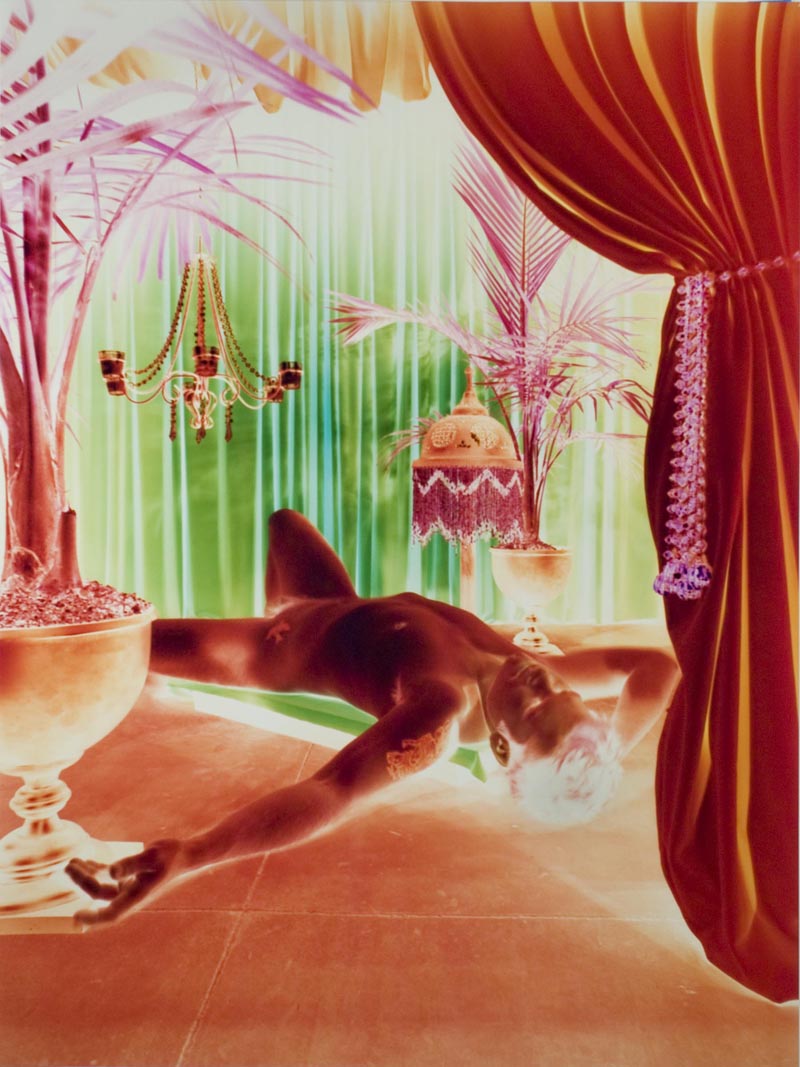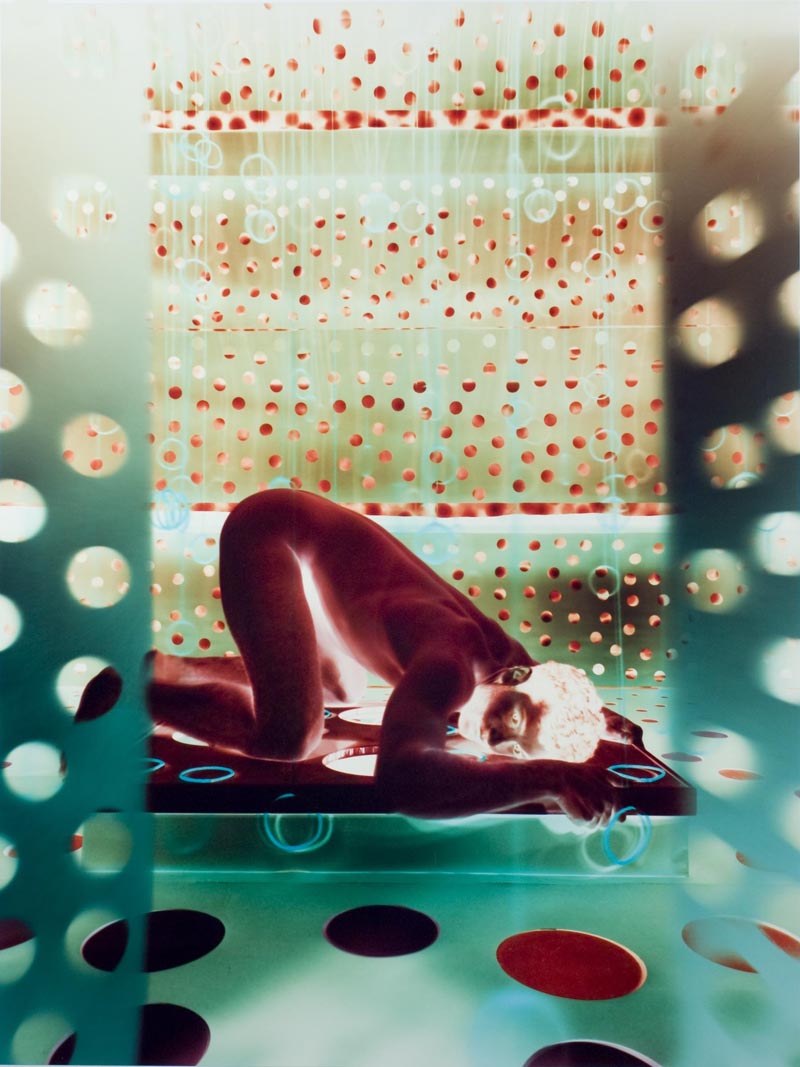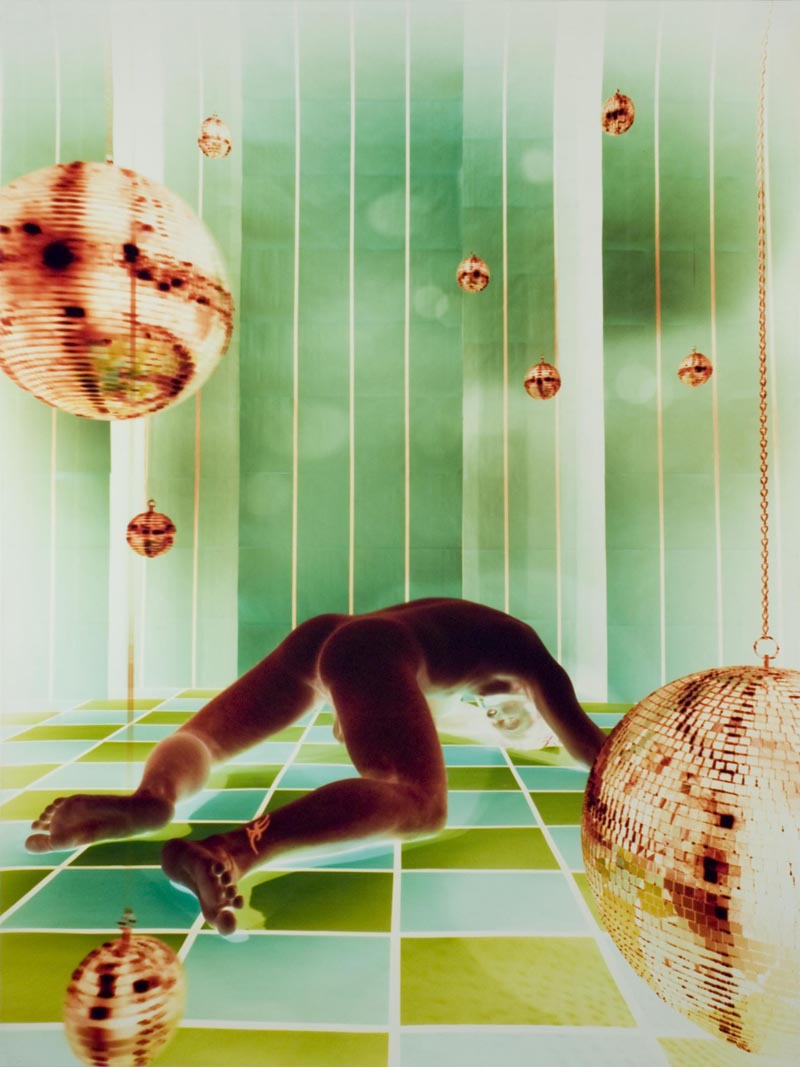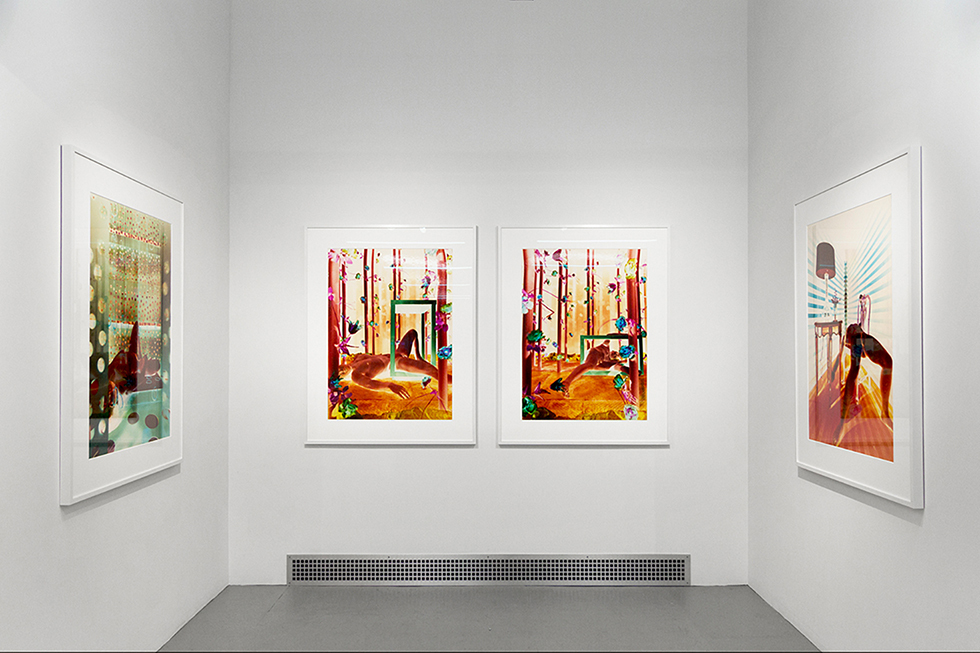Q&A: Robert Calafiore
By Hamidah Glasgow | August 30, 2018
Robert Calafiore was born in New Britain, Connecticut to Italian immigrants. After attending art school for both BFA and MFA degrees, Calafiore has focused on his artistic practice while administrating, teaching and promoting the fine arts, internally and externally from a university staff and faculty position.
He received his MFA in Photography from the State University of New York at Buffalo and his BFA in Photography from Hartford Art School. Currently he lives and works in West Hartford, Connecticut, exhibiting his work nationally and internationally. Calafiore recently was named the Second Sight Award artist speaker for Medium Festival of Photography in October 2018, and is newly represented by ClampArt, New York City.
Robert Calafiore employs a hand-built pinhole camera to create large scale one-of-a-kind c-prints. The subject matter, currently either select pieces from a family collection of ordinary glassware or the nude male figure, is placed within a larger construction, a constructed stage set. It is then transformed by the unique recording characteristics of the camera's wide angle, the extended exposure, and the light sensitive paper's recording abilities. Calafiore manipulates the still life to control the results; altering the saturation, color, density and translucency of specific areas.
Elevating the ordinary to the extraordinary...the every day to a magical place…the primary motivator. This look at the world in the negative reveals a view otherwise impossible to see, revealing a place that keeps him wanting. A merging of passions; one for his muses, (both the glassware that holds so much of his family history and the relationships which energize him) and the observation of a dramatically new understanding of what it means to be human going forward.
HG: What inspired this Figure project?
RC: You and I first met in Fort Collins, when my glass still life work brought me to the Center for Fine Art Photography for a group show. An invaluable part of being included in the Center Forward exhibition that year was a portfolio review of my work with you and Aline Smithson. Along with meeting the both of you, I was introduced to an incredible international group of photographers, so many now good friends, and mutual supporters. A community I call home. Of course, this doesn't begin to answer your question yet, but it sheds light on some pivotal moments in the background, and shortly, it will serve to explain the current direction of the new figurative works in progress.
The original figurative project precedes the large body of work on glass still life by a few years. Several key ingredients came together, first leading to the work with the male nude, and subsequently the still lifes. At the time, I was researching and reading a good deal about "beauty". The word comes with endless baggage. It's definition and use varies wildly, given the subject being discussed and the time period and culture in which it's used. Add art, artists, art critics, art historians, collectors, curators, galleries and museums to the conversation, and the word's use becomes even more complicated. In today's art world, the word can have a powerfully negative connotation. For both good and bad reasons, it's association with everything from the superficial, stereotypical and the decorative, exiled the word in contemporary discussions about art making. Focusing in on my own ideas about beauty, I set out to make a new series of images.
My work as a maker has always looked back at, and to, the Egyptian, Greek, Roman, and Renaissance periods for some inspiration. Notions of beauty, balance, and perfection, as well as elaborate storytelling and mythologies found in those histories, have fueled my imagination from very early on. As I tried to understand what I thought of as beautiful, clearly influenced by my upbringing, education, and personal feelings, I began to make work that felt genuine to me. The work attempts to truthfully document and share my experience of beauty. It's about pleasure and by default, pain. To have one, you must have the other. My photographs, all one-of-a-kind chromogenic prints, are objects in themselves and are a direct result of these ideas and very personal experiences. It's beauty seen as experiential. It can apply to anyone and about anything.
As I tested and developed different options for making, I turned to the camera obscura, drawing on its historical significance and quirky characteristics. I also chose to directly expose large 40" x 30" sheets of color paper, reveling in the unexpected and focusing intensely on process and material. I leveraged the unique power of this simple box to incomparably translate and transform the subject. This work is driven by a fascination and obsession to elevate the ordinary to the extraordinary, the every day to an unfamiliar, beautiful and magical place. The human capacity for seeing all of what surrounds us is challenged. These photographs investigate and question my understanding of beauty and perhaps it's relevance today. Chasing down a way to capture "experiences" in pictures, the pinhole camera's capacity to reveal the invisible became central to the work. It brings to life images that can't be seen in any other way. The negative image penetrates deep into, through and across the subject, shedding a new kind of light on the everyday. The luscious, decadent, indulgent and over-the-top images that result leave me wanting...reliving my experiences over and over.
HG: What do the figures represent? I am assuming that you are posing the figure; please tell me about the meaning of the mostly reclining figures.
RC: Using the male figure as a subject was an obvious choice for me. I recognized the nude as a muse throughout art history, inspiring artworks across time. Research and study of artworks depicting the male nude, from Greek and Roman sculpture to Renaissance painting to early 1900's photographs, have served as a critical influence. Focus on the male nude as an object, to be lusted after, as in so many historic and contemporary works of art depicting the female nude, was both calculated and intuitive. These works, after all, are about me, about my secret loves, desires, and intimate relationships, as well as my shames, insecurities, and questions about who I am.
The poses, in many of these photographs, mimic the classic reclining odalisque, emphasizing the curves and lines of the human form. Most importantly though, the poses intentionally place the male in positions uncommon for men, positions of vulnerability and submission rather than power. The works place us within my fantasies and dreams. The elaborate stage sets and constructions illustrate personal narratives that at once become universal to all those like me, male gazing upon male...the idea, still so uncomfortable for so many.
HG: How long have you been working on this project and what do you hope to convey to the viewers?
RC: I have been making this work intermittently for several years. The first series of male nudes, about 25 pictures, allowed me to experiment and discover much about the process, tools, and materials. As a studio photographer, I am consistently excited by all the opportunities provided by prolonged investigations in lighting, set construction, exposure manipulation, and much more. The marriage of these technical and formal choices with the ideas and concepts underpinning the work is critical to sustaining this ongoing series.
My passion for the traditional and analog formats in photography have come together with my interest in how new technologies are shifting the way we interact with each other as humans. Our relationships with one another and to the physical world as we know them will soon be defined completely differently and in ways, we cannot yet understand. What will it mean to be human going forward, in an uncertain time politically, socially, culturally and technologically?
New work with the male nude will piece itself together around these thoughts and questions as well as a continuing a focus on male-to-male relationships and the male gaze. Conversations, first with both you and Aline Smithson, and then with many others, led me to push myself further and re-look at my figurative work. Returning to this project with a more defined purpose, in light of these shifts worldwide, offers me a chance to speak more clearly and loudly about celebrating our differences and recognizing our similarities above all else. The glass still life work that came after the initial figurative series, solidified these ideas and drops me off at the beginning of a new body of work on the male nude and the nude male.
HG: I see the work in a whole new way. Your answers allowed me into your personal world and the nuances that the images represent. I've been struggling with the positions of the figures and what their body language represents. Now I realize that this is in part because I am not familiar with the male nude in this context and that it does make me uncomfortable. Bravo to you for bringing this sensibility to your artwork and thereby bringing it to the public. The figure is you, is that correct? If you are using other models how do you choose them?
RC: Figuratively speaking, the figure is indeed me...a representation of me. I choose the models based on my relationships with them. Some are very good and longtime friends, some are ex-partners and others yet, just brief encounters. Some common qualities bring them all together as my muses. Whether intimate and loving, primal and lustful, or intellectual and friendly, the attraction is strong and binding. I must see myself to a certain degree, in each of them. They become surrogates, standing in for me and collaborating with me to describe and define the way I see and understand myself and others as men in the world.
HG: This gets me to thinking about the way in which female nudes have been represented for so long and the problematic power dynamic related to those images. In your images the power dynamic isn't an issue, would you agree? What problematics are presented when the gaze is male to male?
RC: I would say that the power dynamic is entirely different, however, I am not sure I can define it. We have come to understand the "male gaze" as the act of depicting women and the world, from a masculine, heterosexual perspective that presents women as sexual objects for the pleasure of men. This work aims the gaze at itself, male upon male. Many of the questions I first posed for myself at the start of this series remain unanswered. Is my gaze objectifying? Is there a difference? These photographs are in some sense autobiographical, placing me at the center of my own gaze. The idea that I am the object of my own gaze has prompted my curiosity and will be one of the threads that propels the new work forward.
HG: Yes, those are great questions and I'm glad that you are going to pursue them in this work. Thank you for your time and talent. I'll be seeing you in San Diego at the Medium Festival of Photography where you will be a featured speaker.
RC: Thank you.
All images © Robert Calafiore
